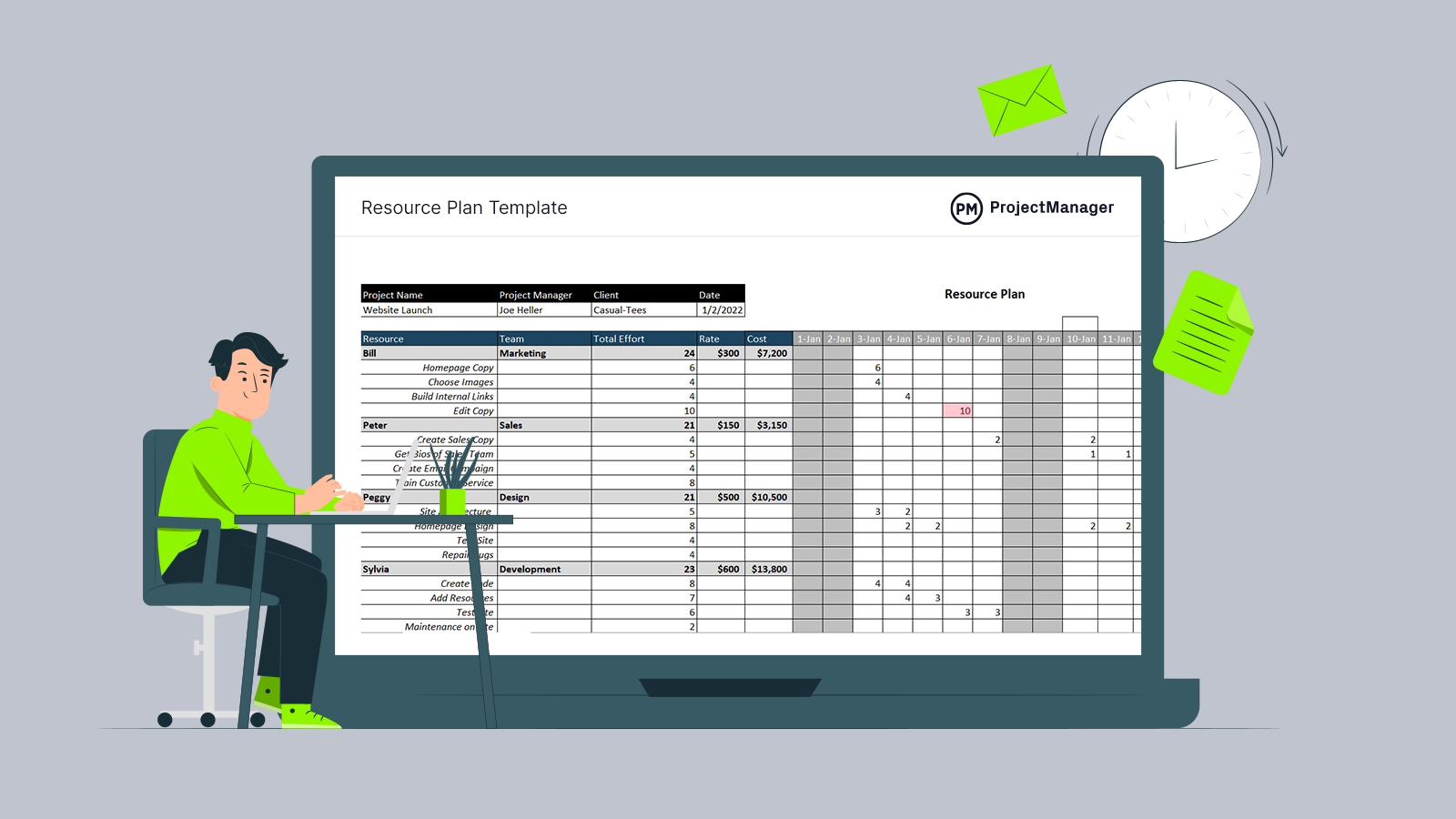
ProjectManager
by Peter Landau | Jul 2, 2024Businesses, nonprofits and even government agencies execute projects to improve the efficiency of their operations and achieve strategic goals. These projects require a variety of human and non-human resources such as raw materials, equipment and machinery, which need to be managed.
Resource management is the process of estimating what resources will be needed to complete a project, acquiring them, making a schedule for their allocation and monitoring their utilization during the execution of a project, program or portfolio of projects. Usually, the project manager or project management office (PMO) oversees this process, but some organizations have a resource manager who specializes in this area.

Use this free Resource Planning Template for Excel to manage your projects better.
Download Excel File
A resource manager is a member of a project team or PMO who is responsible for leading the process of defining resource requirements, estimating costs, procuring resources and ensuring they’re properly allocated and utilized. One of its key responsibilities is to develop a resource management plan to guide the resource planning efforts of the organization.
A resource management plan is a document that describes all the different guidelines, operating procedures, tools and methods an organization uses to manage its resources over the execution of projects. For example, it should itemize project resources, indicate their estimated costs, a resource schedule for their allocation and supplier information, among other details.
However, a resource management plan doesn’t need to be a static document. You can use resource management software like ProjectManager to visualize your resource schedule, allocate resources and monitor their costs in real time. Get started with ProjectManager today for free.

There are three broad resource management categories: project resource management, enterprise resource management and human resource management. As its name suggests, project resource management is the process of overseeing the use of resources such as labor, materials and equipment for the completion of project tasks. Enterprise resource management, on the other hand, consists of using these resources to manage the everyday operations of a business.
Enterprise resource management can be further divided into industry-specific types of resource management such as construction resource management and manufacturing resource management. Lastly, human resource management focuses on allocating human resources for both project and enterprise resource management.
Project resources can be simply defined as anything needed to execute project tasks, including the people executing the work. Here are some examples of project resources.
Resource management is an important process for many disciplines such as project management, portfolio management and business management. Here’s how it helps in each of those fields.
Resource management is critical when managing projects. It’s important to identify your resource requirements during the initiation and planning phases of the project life cycle so you can estimate costs and create a project budget. Then it’s important to ensure you schedule the right resources at the right time so your project plan is completed on time.
Resource management is even more important for project portfolio management than it is for managing individual projects. The reason is program managers, portfolio managers and project management offices (PMOs) need to ensure they allocate resources strategically to manage multiple projects simultaneously. For example, they can minimize costs by using the same resources across projects.
How you manage your business resources greatly affects its ability to function and grow beyond project or enterprise resource management, especially if you’re in resource-intensive industries such as professional services, construction or manufacturing.
Managing resources effectively has a myriad of benefits for your business such as helping you cut down costs, streamlining your operations planning and maximizing your profits.
Resource management software is a set of digital tools that can help with the stages of the resource management process. For example, ProjectManager is project resource management software equipped with tools such as Gantt charts, dashboards, timesheets, workload management charts and resource utilization reports.
There are many desktop-based and online resource management software alternatives, all of which offer a different functionality. For that reason, we’ve reviewed the best resource management software alternatives so you can make an informed decision.
While most of these resource management tools started as analog charts, documents and diagrams, they’ve evolved and are now part of resource management software that can be used for either project or enterprise resource planning.
As stated above, resource management is an ongoing process that starts during the project planning phase and continues until project closure. This is known as the resource management life cycle, which is made up of four stages that project managers should understand to properly manage project resources.
Most project managers use resource management software to help them as they move from one phase of the resource management process to the next.
Resource management tools and techniques help organizations establish a resource management process or framework that can bring numerous benefits such as:
Now that we’ve learned about the different resource management phases and the techniques you can use, you’re ready to get started with resource management. This free resource management plan template is a good tool for beginners. It allows you to list your resources and keep track of their availability and costs.
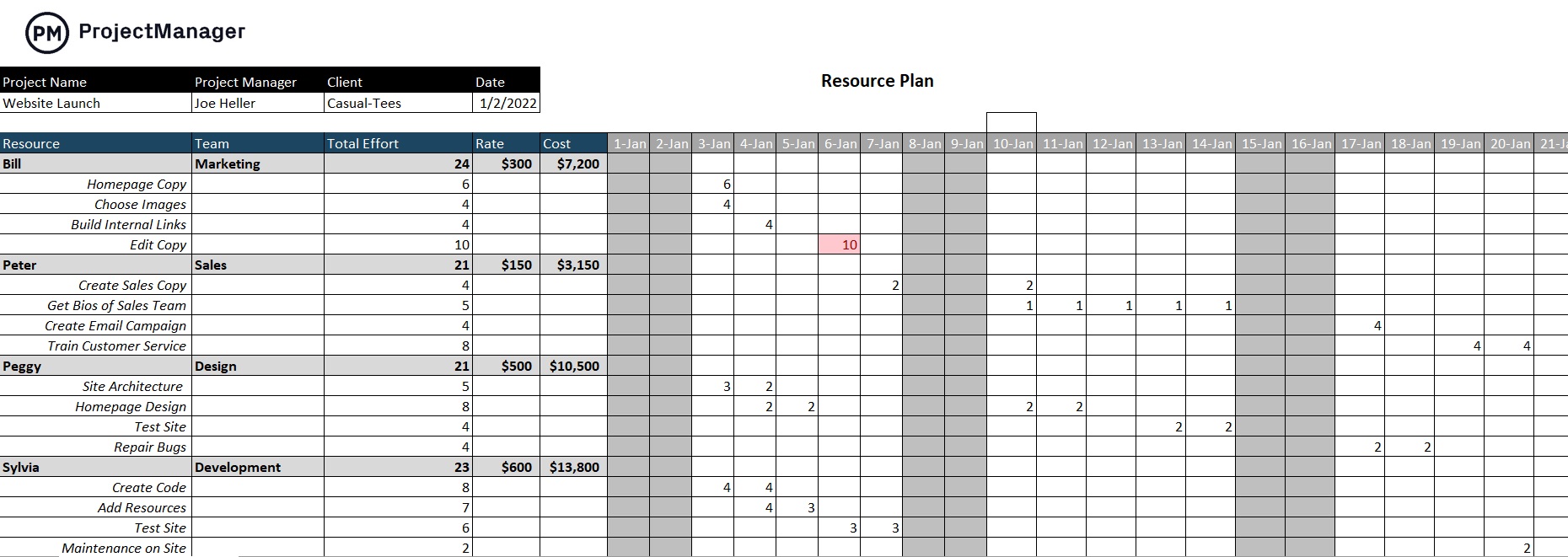
However, our resource plan template must be manually updated and shared with the team. That’s time-consuming, which is why most project managers use resource planning software to help streamline the process.
Project managers implement the following resource management techniques to forecast, plan, allocate, level and optimize resources during the execution of a project.
Project managers must do their best to estimate what resources are needed for a project and how those resource requirements fit with the organization’s current plans. To do this, you must define your project scope to identify all project tasks and their required resources.
The resource capacity of an organization refers to the maximum amount of work it can accomplish with its current available resources over a period. Resource capacity planning is the process of ensuring resource capacity is sufficient to execute a project.
A resource allocation technique that consists of determining the maximum number of work hours employees can be allocated and ensuring that 100% of their time is utilized throughout a project.
Resource leveling is the process of re-assigning work to a project team to solve overallocation or scheduling issues. By thoroughly understanding what your team members can offer, you can assign tasks based on their abilities to maximize resource efficiency.
Careful resource planning is equally as important as resource tracking. Project managers need to keep track of resource utilization to spot any resources that aren’t being used efficiently. Then they can simply reallocate those resources or change the resource management plan.
Resource smoothing simply consists of delaying non-critical tasks to complete a project on time with the available resources. This is done by using the slack or float on each of those tasks to delay them without affecting the critical path. By delaying non-critical tasks, you can move your resources to complete critical path tasks and circle back to the least important activities.
We’ve created over 100 free project management templates for Word and Excel which help plan, schedule and track projects. Here are some that can help with the resource management process.
This free resource capacity planning template helps you list your team member’s names, indicate their total available work hours and hourly pay rate, assign work to them and automatically calculate their labor costs and resource utilization rate.
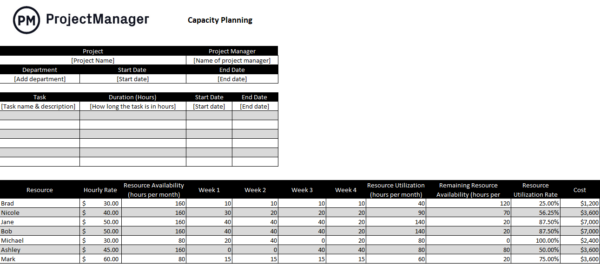
This resource plan template for Excel helps you visualize employee work hours using a calendar-like timeline, which makes it ideal for allocating organizational resources across projects over time.
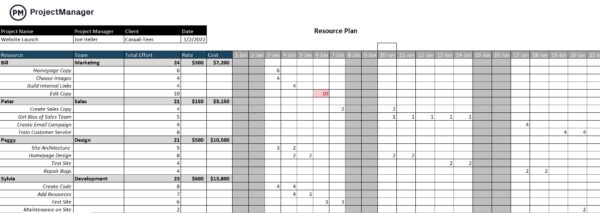
This timesheet template for Excel is a project time tracking tool that allows organizations to log the work hours team members spend working on tasks for payroll processing.
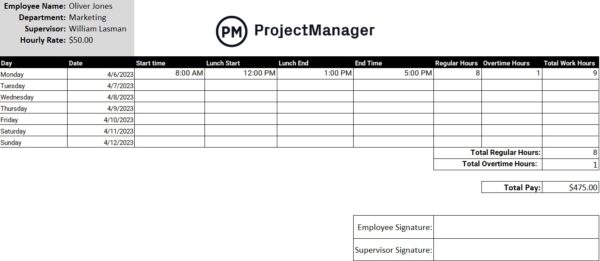
Here are some key tips and best practices that can help you avoid common resource planning mistakes.
A resource constraint is any condition that limits the availability of resources for the completion of project tasks. For example, a piece of equipment might be scheduled for maintenance, or team members may be allocated for multiple projects, limiting their availability.
In most cases, these projects will require an organization-wide effort and an extensive use of resources. It’s important to assemble a cross-functional team and involve key stakeholders in the resource forecasting stage to obtain a holistic and accurate view of project resource requirements.
In project management, the level of effort of a project refers to all the supporting activities that are needed to complete project tasks, such as transporting resources from a warehouse to the job site or training employees.
Resource management was developed to manage the resources in your project, which requires visibility into resource availability, workload and more. ProjectManager is project management software that gives you real-time data to make more insightful decisions when managing resources.
Resources and costs can be scheduled with tasks on our Gantt chart project view. Once you set a baseline, you can also consult the planned versus actual progress of your overall project to get a heads-up if there’s a problem with resources. The progress bar tells you the progress being made on a specific task according to the planned effort. If you’re not meeting your baseline, reallocate your resources to stay on track.
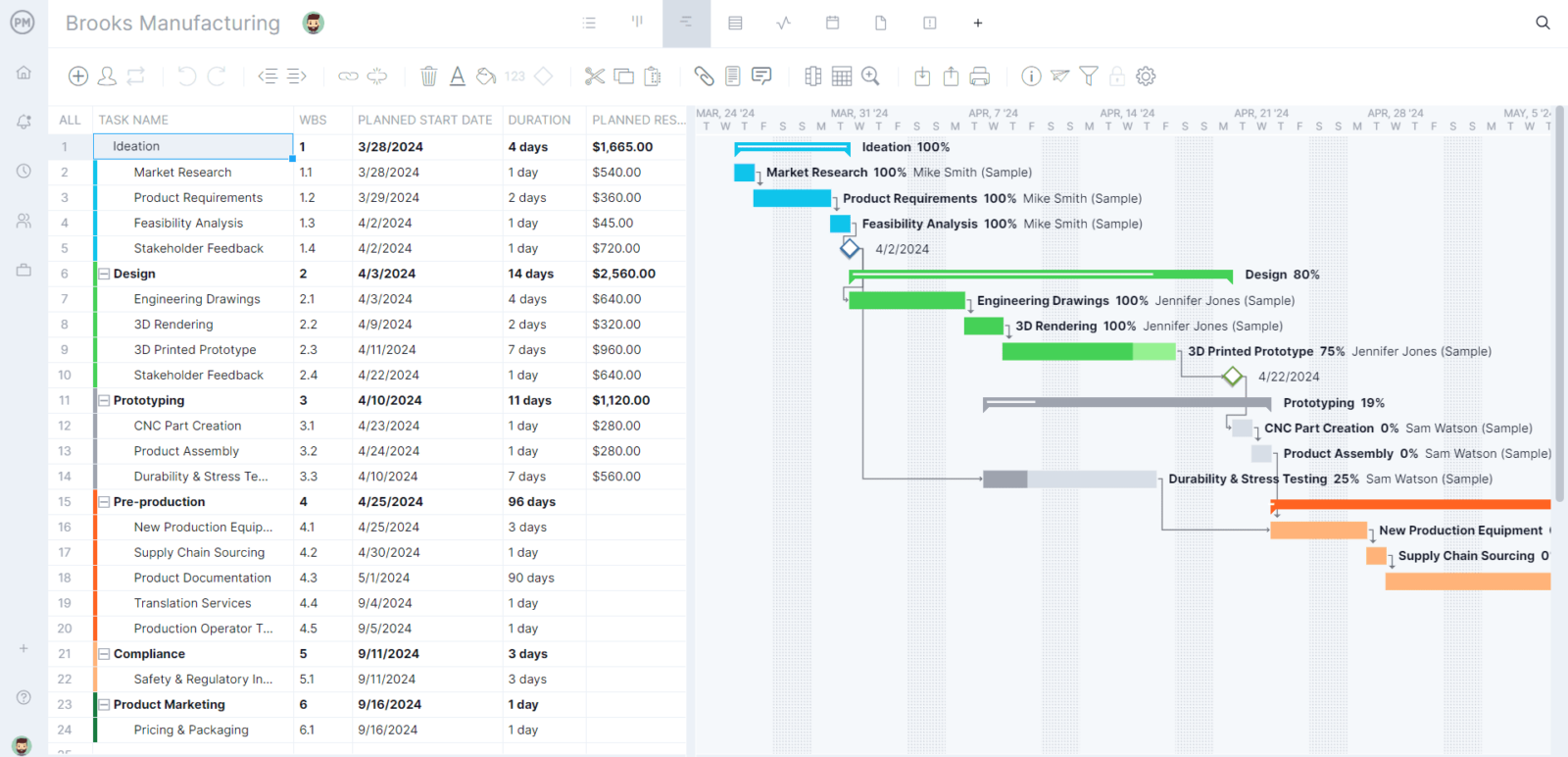
Your team is your most valuable resource. You can set up your team’s availability, workdays, holidays and PTO regardless of where they work. Once they start working, you don’t want to burn them out or leave them idle. Our color-coded workload page lets you see at a glance whether your team members are overallocated or under-allocated. A balanced workload leads to a more productive and happy team—and happier teams are more productive.
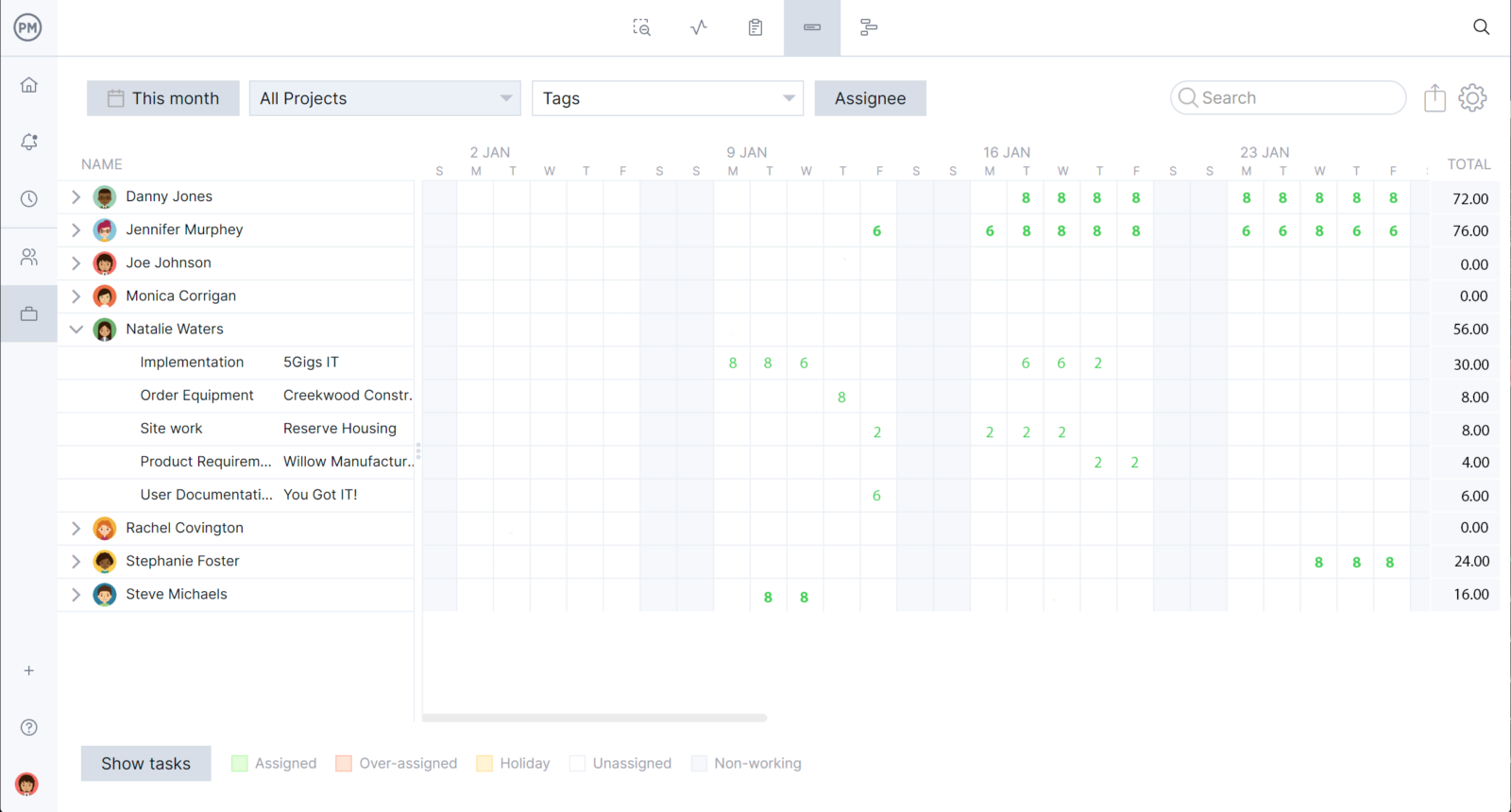
You’ve planned your resource management, but as you execute the project, you have to monitor those resources. If you don’t keep an eye on how you’re using resources, you risk going over budget or missing deadlines. Our real-time project dashboard automatically collects live data and displays it in colorful graphs that chart six project metrics. In one click, you can generate reports that go deeper into the workload, time, costs and much more. All reports can be filtered and shared with stakeholders as you see fit.
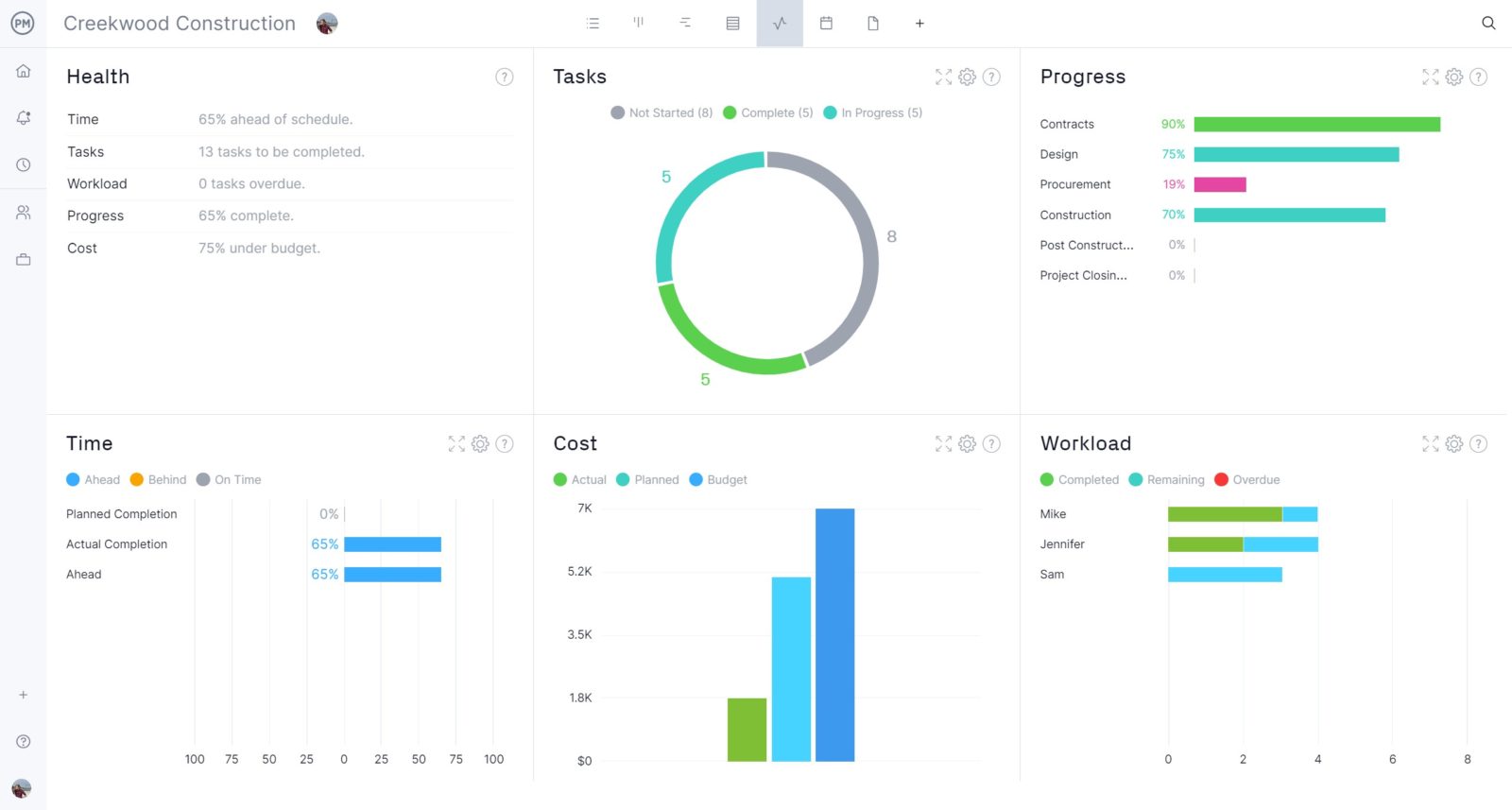
Our software helps you plan, manage and report on project resources. You can allocate and track resource costs, see your team’s availability to make assignments and monitor everything with dashboards that act as instant status reports. Get everything you need to manage resources all in one place.
When you’re managing resources on a project, there are a lot of balls to keep in the air, and that process can get complicated and confusing. However, with the right online tool, you’re able to plan, monitor and report on your resources with great control and accuracy. ProjectManager is online project management software that gives you the tools you need to steer your project to successful completion. Try it for yourself.